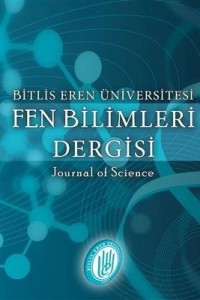Abstract
Multiple
source energy harvesting architecture with a common control circuit is
presented in this paper. As multiple energy sources, thermoelectric generator
(TEG), microbial fuel cell (MFC) and solar cell (PV) are deployed. With the
proposed architecture, all sources allow to provide supply voltage to the load
and self-starting i.e., no need of external power sources is achieved. Results
are carried out in a 0.13μm CMOS process and show the effectiveness of the
proposed architecture over the conventional converter circuits. The output is
regulated to 1.58V.
Keywords
Power converter Energy harvesting Energy combining TEG MFC Solar cell Wireless Sensor Network
References
- Reference1 Carli D., et al., 2011. An effective multisource energy harvester for low power applications. Proc. DATE pp. 1-6.Reference2 Qian F., et al., 2016. Design of a shared-stage charge pump circuit for multi- anode microbial fuel cells. IEEE International Symposium on Circuits and Systems (ISCAS) pp. 213-216.Reference3 Shi C., et al., 2011. A multiple-input boost converter for low-power energy harvesting, IEEE Trans. Circuits Syst. II Exp. Briefs vol. 58 no. 12 pp. 827-831. Reference4 Blind reviewReference5Bandyopadhyay S., Chandrakasan A. P., 2012. Platform architecture for solar thermal and vibration energy combining with MPPT and single inductor, IEEE J. Solid-State Circuits vol. 47 no. 9 pp. 2199-2215. Reference6 Colomer-Farrarons J., et al., 2011. A multiharvested self-powered system in a low-voltage low-power technology, EEE Trans. Ind. Electron. vol. 58 no. 9 pp. 4250-4263. Reference7Tan Y. K., Panda S. K., 2011. Energy harvesting from hybrid indoor ambient light and thermal energy sources for enhanced performance of wireless sensor nodes, IEEE Trans. Ind. Electron. vol. 58 pp. 4424-4435. Reference8Blind reviewReference9Lhermet H., et al., 2008. Efficient power management circuit: From thermal energy harvesting to above-IC microbattery energy storage, IEEE J. Solid State Circuits, vol. 43, no. 1, pp. 246-255. Reference10Ramadass Y. K., Chandrakasan A. P., 2011. A battery-less thermoelectric energy harvesting interface circuit with 35 mV startup voltage, IEEE J. Solid State Circuits, vol. 46, no. 1, pp. 333-341.Reference11Carlson E., et al., 2010. A 20 mV input boost converter with efficient digital control for thermoelectric energy harvesting, IEEE J. Solid State Circuits, vol. 45, no. 4, pp. 741-750.
Abstract
References
- Reference1 Carli D., et al., 2011. An effective multisource energy harvester for low power applications. Proc. DATE pp. 1-6.Reference2 Qian F., et al., 2016. Design of a shared-stage charge pump circuit for multi- anode microbial fuel cells. IEEE International Symposium on Circuits and Systems (ISCAS) pp. 213-216.Reference3 Shi C., et al., 2011. A multiple-input boost converter for low-power energy harvesting, IEEE Trans. Circuits Syst. II Exp. Briefs vol. 58 no. 12 pp. 827-831. Reference4 Blind reviewReference5Bandyopadhyay S., Chandrakasan A. P., 2012. Platform architecture for solar thermal and vibration energy combining with MPPT and single inductor, IEEE J. Solid-State Circuits vol. 47 no. 9 pp. 2199-2215. Reference6 Colomer-Farrarons J., et al., 2011. A multiharvested self-powered system in a low-voltage low-power technology, EEE Trans. Ind. Electron. vol. 58 no. 9 pp. 4250-4263. Reference7Tan Y. K., Panda S. K., 2011. Energy harvesting from hybrid indoor ambient light and thermal energy sources for enhanced performance of wireless sensor nodes, IEEE Trans. Ind. Electron. vol. 58 pp. 4424-4435. Reference8Blind reviewReference9Lhermet H., et al., 2008. Efficient power management circuit: From thermal energy harvesting to above-IC microbattery energy storage, IEEE J. Solid State Circuits, vol. 43, no. 1, pp. 246-255. Reference10Ramadass Y. K., Chandrakasan A. P., 2011. A battery-less thermoelectric energy harvesting interface circuit with 35 mV startup voltage, IEEE J. Solid State Circuits, vol. 46, no. 1, pp. 333-341.Reference11Carlson E., et al., 2010. A 20 mV input boost converter with efficient digital control for thermoelectric energy harvesting, IEEE J. Solid State Circuits, vol. 45, no. 4, pp. 741-750.
Details
| Primary Language | English |
|---|---|
| Journal Section | Araştırma Makalesi |
| Authors | |
| Publication Date | December 24, 2019 |
| Submission Date | March 13, 2019 |
| Acceptance Date | July 23, 2019 |
| Published in Issue | Year 2019 Volume: 8 Issue: 4 |


